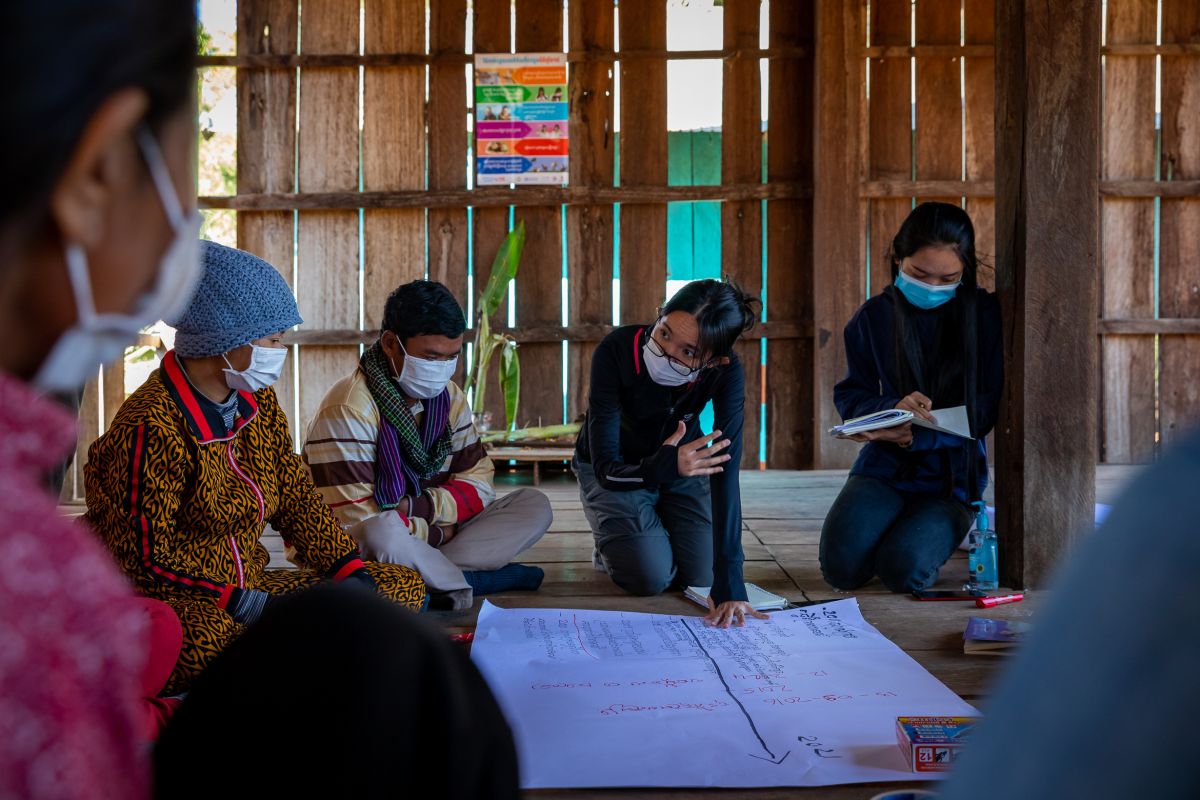

By 2006, it was clear that guidelines on how to establish and implement community forestry would be necessary to clarify the ambiguity of the 2002 Forestry Law and the 2003 sub-decree. The result was the Community Forestry Prakas.
The prakas contained guidelines on developing community forestry regulations, management committees, agreements and management plans. These components were required if a community in Cambodia wanted to obtain the official certificate that formalized its land and initiate the 15-year lease agreement with the Government.
Even these guidelines were complicated, lengthy and inefficient, which meant that formalizing community forests and implementing the guidelines was still an issue. To make matters worse, the bureaucratic machine that inhibited the implementation of the prakas was also promoting rapid expansion of economic land concessions. It became a competition over land use.
Once forest concessions ended in 2002, the Ministry of Agriculture, Forestry and Fisheries redesignated a previous forest concession as a community forest or economic land concession, among other land uses. If a community did not formalize its community forest, it could potentially become a different form of land use overnight.
Making the prakas work
After the prakas was enacted in 2006, RECOFTC and other non-government organizations made formalization of community forests their top priority. Through its years of training government officials, local communities and community forestry practitioners, RECOFTC had already established a formidable network dedicated to capacity-building, political change and formalization. The prakas provided the framework for RECOFTC to combine these three strengths while giving other organizations the tools to carry out government policy.
RECOFTC, in essence, wanted to “make the prakas work”, says Jim Bampton, who worked in Cambodia for the organization from February 2006 to June 2009. “Our strategy was to systematize the process of formalization using the prakas. We wanted to break it down into a step-by-step process that would be easy to replicate.”
In 2007, there were 253 community forests, of which the Ministry of Agriculture, Forestry and Fisheries had approved only 37. Three years later, there were 428 community forests, with 233 approved.
To do this, RECOFTC worked with local communities, local authorities and government officials from the district, provincial and national levels. RECOFTC targeted stakeholders from across the process and developed localized training manuals and approaches. This provided the necessary connections to help all stakeholders understand the legal frameworks developed in the early 2000s.
“RECOFTC had connections with officials within the Forestry Administration and the local authorities,” says Khea Sokchea, the community forestry chief of Chombok Hos Village. “RECOFTC would facilitate a meeting and set out objectives. This meant that all we had to do [to formalize our community forest] was prepare the documents and submit.”
By systematizing the process and building capacity across the sector, RECOFTC and other non-government organizations accelerated the formalization of community forests.
It worked.
In 2007, there were 253 community forests, of which the Ministry of Agriculture, Forestry and Fisheries had approved only 37. Three years later, there were 428 community forests, with 233 approved.

Going local
Despite the progress, the economic potential of concessions and private land often meant that community forestry was still ill-received, even if it was formalized and legal. In some cases, local authorities and others interested in taking land resorted to “spread[ing] information against community forests”, according to Chey Setha, the Forestry Administration’s Triage Chief in Preah Vihear Province. A clear gap between national intent and subnational implementation remained.
To overcome this, RECOFTC turned its attention in 2008 to local authorities rather than district and provincial forestry officers. Training from RECOFTC and a Cambodian organization called Community Economic Development helped local authorities better understand the process of community forestry development, the benefits and how to engage with different stakeholders.
By 2010, the Forestry Administration Triage official stationed in Stung Treng Province, Ry Reaksmey, could see the progress. “The understanding of the community, the local authorities and the provincial level authorities was increasing,” he says. “There was more understanding about the law and about certain interventions.”
